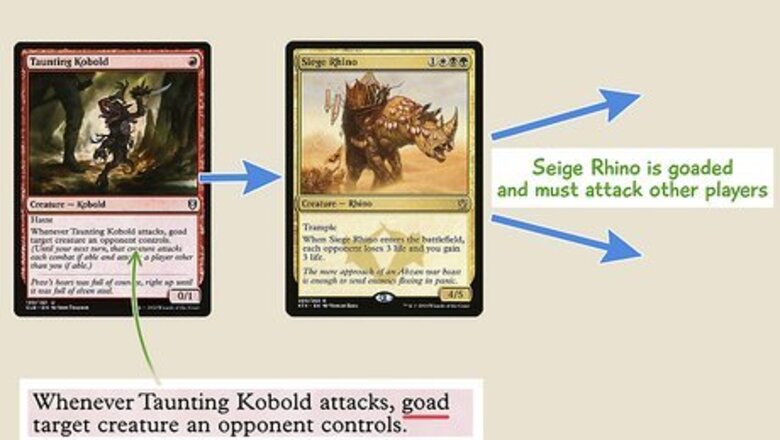
views
- When a creature is goaded, it must attack on its next turn. However, it cannot attack the player that goaded it, if possible.
- If a goaded creature cannot attack for some reason, the goad ability doesn’t do anything.
- Goad is a bit of an odd ability because it’s a “designation,” which means it isn’t a trigger on its own (like Monarch or Ascend).
What is goad?
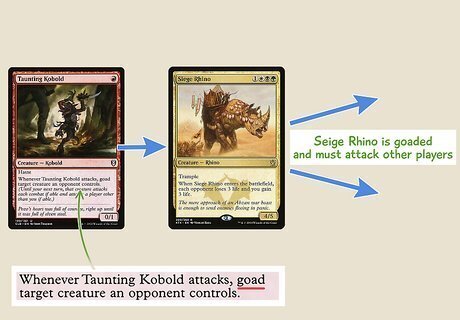
Goad is a keyword ability that forces creatures to attack. Goad creates a condition where a target becomes “goaded” until a player’s next turn. On most cards, goad’s reminder text specifically states, “Until your next turn, [the goaded] creature attacks each combat if able and attacks a player other than you if able.” Goad is primarily a blue and red card, although black does have access to a few goad cards as well. Goad is a fairly unique ability because it is neither a triggered nor static ability—it is a designation. Triggers usually make goad happen, but on its own it’s not a trigger. Other designations in MTG include monstrous, renowned, initiative, and monarch.
How does goad work?
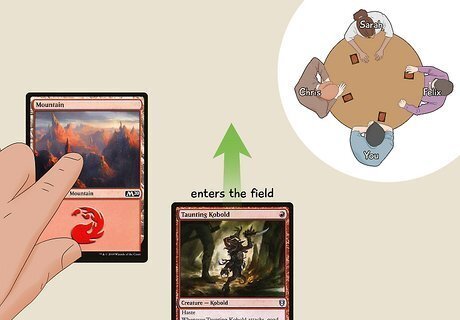
You cast a card with goad. Let’s take Taunting Kobold as an example. You’re in a multiplayer game with your friends Chris, Sarah, and Felix. You tap a mountain and cast Taunting Kobold. The goad ability has not occurred yet because it is not a cast trigger. If nobody counters the Kobold, it enters the battlefield. If you were to cast a card like Jeering Homunculus instead, the goad effect would trigger as it enters the battlefield since it’s an ETB trigger.
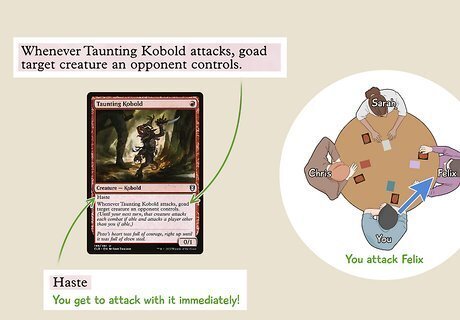
Something happens that causes goad to trigger. For Taunting Kobold, the card states, “Whenever Taunting Kobold attacks, goad target creature an opponent controls.” So, you’d have to declare attackers on your turn to trigger the goad. But Taunting Kobold has haste, which means you get to attack with it immediately! Let’s say you attack your friend Felix. In Magic, a trigger refers to anything that happens when a certain condition is met. Triggers use the stack, but goad itself isn’t a trigger. However, goad occurs because of a trigger. For Taunting Kobold, it’s “whenever Taunting Kobold attacks.” Goad can be activated by an enter-the-battlefield (ETB) trigger, an activated ability trigger, or a state-based trigger. It all depends on the specific card.
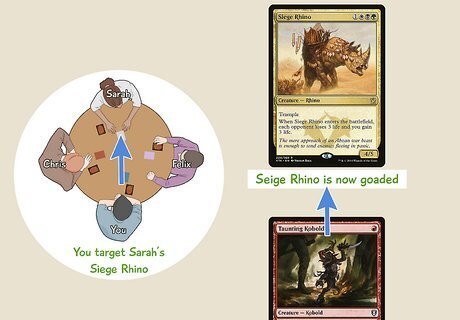
The trigger causing goad goes on the stack. By attacking, you’ve fulfilled the requirement for goad to go off. A trigger goes on the stack and you choose which creature you’d like to goad. You look at the board and decide you want Sarah’s Siege Rhino to attack next turn. You declare something like, “I’m going to target Sarah’s Siege Rhino.” Priority passes and every player has a chance to respond. Remember, Taunting Kobold says “an opponent,” not the opponent you’re attacking!
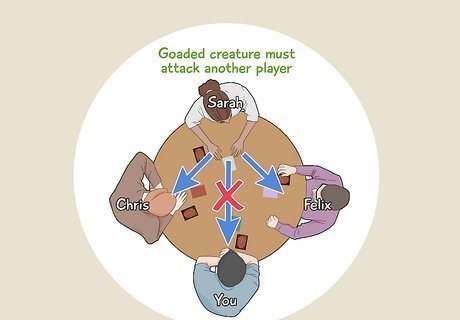
The goaded creature must attack another player until your next turn. If nobody counters the trigger, it resolves and Sarah’s Siege Rhino is now goaded. When it is Sarah’s turn, she must attack with that Siege Rhino and it can only attack Chris or Felix. It remains goaded until the start of your next turn. If Sarah somehow got another turn (by playing a card like Time Warp, for example), Sarah would have to attack with Siege Rhino again. A handful of cards cause multiple (or all) creatures to be goaded. Agitator Ant and Disrupt Decorum are good examples. If multiple creatures are goaded, they all must attack.
Nuances & Unique Interactions
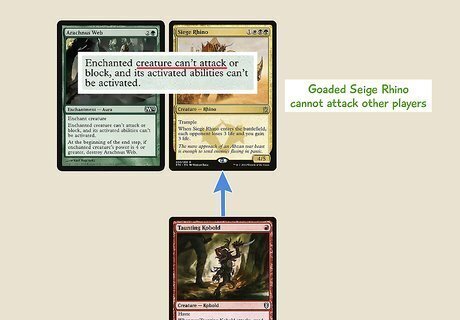
Goad does nothing if the creature cannot attack. Goad specifically states, “Until your next turn, [the goaded] creature attacks each combat if able and attacks a player other than you.” That “if able” is important. If the creature is incapable of attacking—for any reason—the fact that it’s goaded doesn’t mean anything. A creature may be unable to attack if: They’re already tapped. If you goad an Elvish Mystic for example, and that player taps the Elvish Mystic for mana before attackers are declared, it won’t be able to untap for attacks. The creature has defender or some other “unable to attack” condition locking it out of an attack. The creature is enchanted or affected by something preventing it from attacking. Cards like Arachnus Web are a good example of this.

Tax effects cannot force a player to spend mana on goad. Ghostly Prison and Propaganda prevent players from attacking with their creatures unless they pay mana ahead of time. So, does a goaded card have to attack? Do you have to pay mana? If a player has a goaded creature and an effect like this is in place, they are not required to pay the tax costs. The creature is still goaded, it just doesn’t attack.

Goaded creatures cannot attack planeswalkers. Goad specifically states that targeted creatures must attack “a player.” That completely prevents goaded creatures from targeting any planeswalkers on the board. The only exception is if a player uses Gideon Jura’s +2 ability. In that case, the player actually has a choice of attacking Gideon or “a player other than you” (i.e. someone who doesn’t control Gideon and someone who isn’t the player that goaded them).
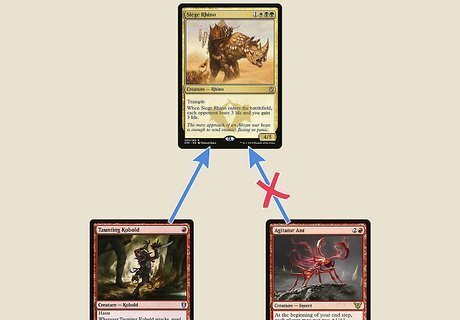
Multiple instances of goad do not stack. Goad is a designation, so once a creature is goaded, they’re goaded. It can’t be “extra goaded” or anything like that, and it won’t stack for multiple turns. As a result, you’re best off targeting different creatures if you have the option to goad multiple creatures.
Why doesn’t goad see competitive play?
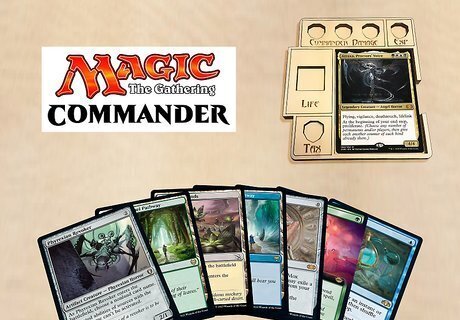
Goad is designed for casual commander games. If you’re playing EDH/Commander, you’ll run into goad occasionally. However, you’re unlikely to see it in Modern, Legacy, or Vintage. It’s a super conditional ability that isn’t always relevant in one-on-one games, but in multiplayer games, it’s much more dynamic and useful. There are dozens of eternal decks that don’t even run creatures, and goad doesn’t even do anything if there aren’t creatures on your opponent’s board. In competitive one-on-one games, you’re also the only target to attack. You don’t always want to be attacked!















Comments
0 comment